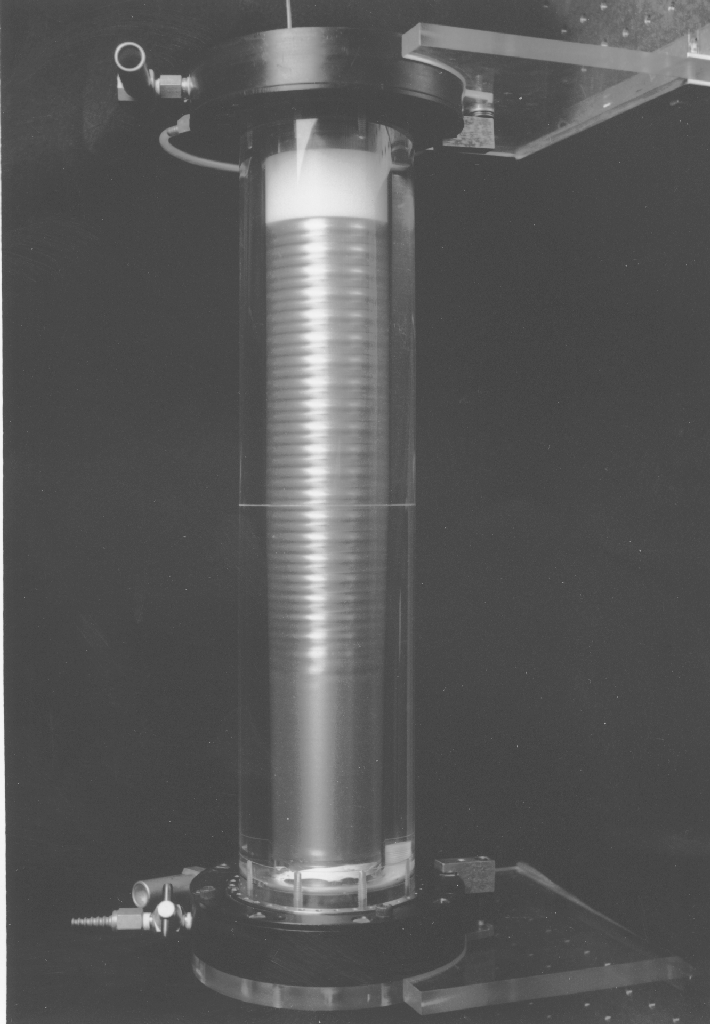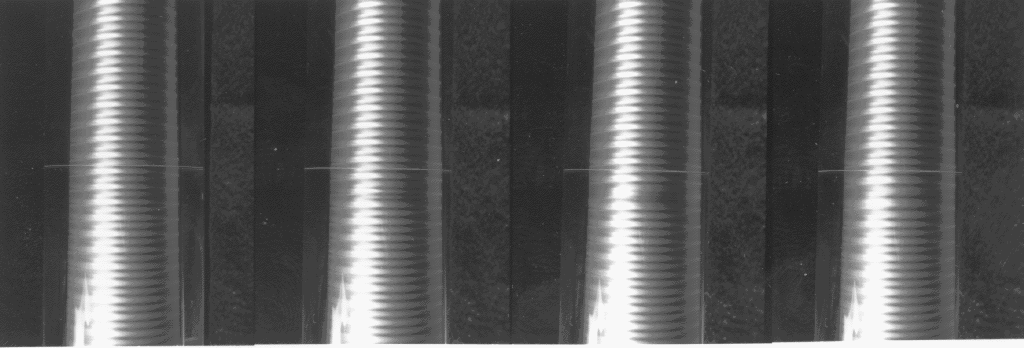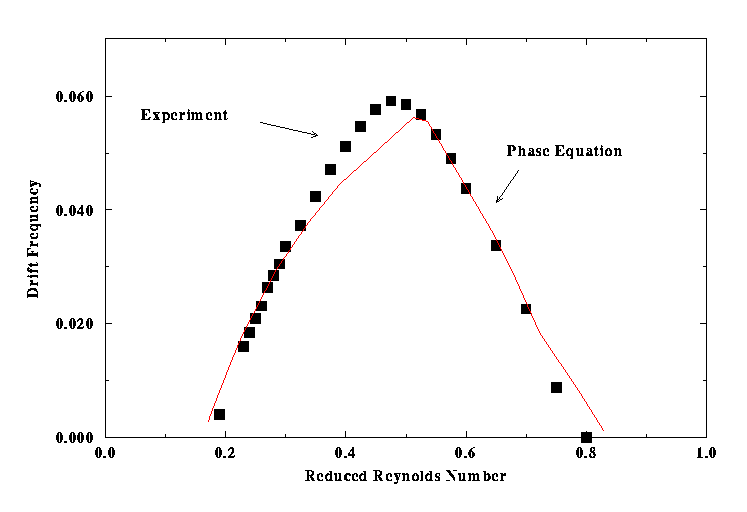Taylor
Vortex Flow
A classic pattern formation is
Taylor vortex flow, which is obtained between two concentric rotating
cylinders. In the simplest case only the inner cylinder is rotating.
An experimental set-up is shown in the figure below. In this case a
slight modification has been applied: one of the cylinders has been
tapered. This reduces the local Taylor number, which measures the
effective rotation rate, in the lower section of the system with the
effect that only in the upper part vortices form.

Comparison between the
theoretical stability boundary of axisymmetric Taylor vortex flow
with respect to long-wavelength perturbations (Eckhaus instability)
and experimental results. In a set of straight cylinders. The dotted
line indicates the theoretical neutral curve above which
perturbations with the indicated wave number grow and form vortices.
The two solid lines give the theoretical stability limits of these
vortices as obtained in a weakly nonlinear theory and by a full
numerical Galerkin procedure. The experimental results are indicated
by plusses.

Experiment:
M.A. Dominguez-Lerma, D.S. Cannell and G. Ahlers, Phys. Rev. A 34
(1986) 4956.
Theory: H. Riecke and H.-G. Paap,
Phys. Rev. A 33 (1986) 547; Phys. Rev. Lett. 59 (1987) 2570.
The stability limit is given by the
Eckhaus instability, which is a long-wave sideband instability. It
usually does not saturate and eventually leads to the destruction or
creation of a vortex pair. Such a process is shown in the sequence
of figures below.

Photos:
courtesy L. Ning and G. Ahlers, UCSB.
As
time progresses from left to right a vortex pair located just below
the thin white marking line is destroyed leaving behind a vortex pair
with larger wavelength. In the usual set-up, eventually the pattern
will equilibrate to a spatially constant wavelength.
In a system like that depicted
in the top figure, in which one or both of the cylinders are tapered
providing a spatial ramp in the Taylor number the band of stable
wavenumbers collapses to a single wavenumber. Experimental and
theoretical results are given in the figure below (theory: solid
line, experiment: plusses). The wave numbers selected by ramps
employing different ratios of the tapering angles of the two
cylinders are shown as dashed lines.

Theory: H. Riecke and H.-G. Paap,
Phys. Rev. A 33 (1986) 547; Phys. Rev. Lett. 59 (1987) 2570.
Experiment:
M.A. Dominguez-Lerma, D.S. Cannell and G. Ahlers, Phys. Rev. A 34
(1986) 4956.
When a wave number is selected which
is Eckhaus-unstable (cf. the two right-most selection curves in the
above figure) persistent dynamics arises in which vortex pairs are
annihilated in the bulk and resupplied via the ramp. Thus the
phaseslip process shown above occurs repeatedly and a drift of the
pattern is generated. The plot below shows the measured and
theoretically determined frequency of this dynamics.

Theory: H.-G. Paap and H. Riecke,
Phys. Fluids 3 (1991) 1519.
Experiment: L.
Ning, G. Ahlers and D.S. Cannell, Phys. Rev. Lett. 64 (1990) 1235.





